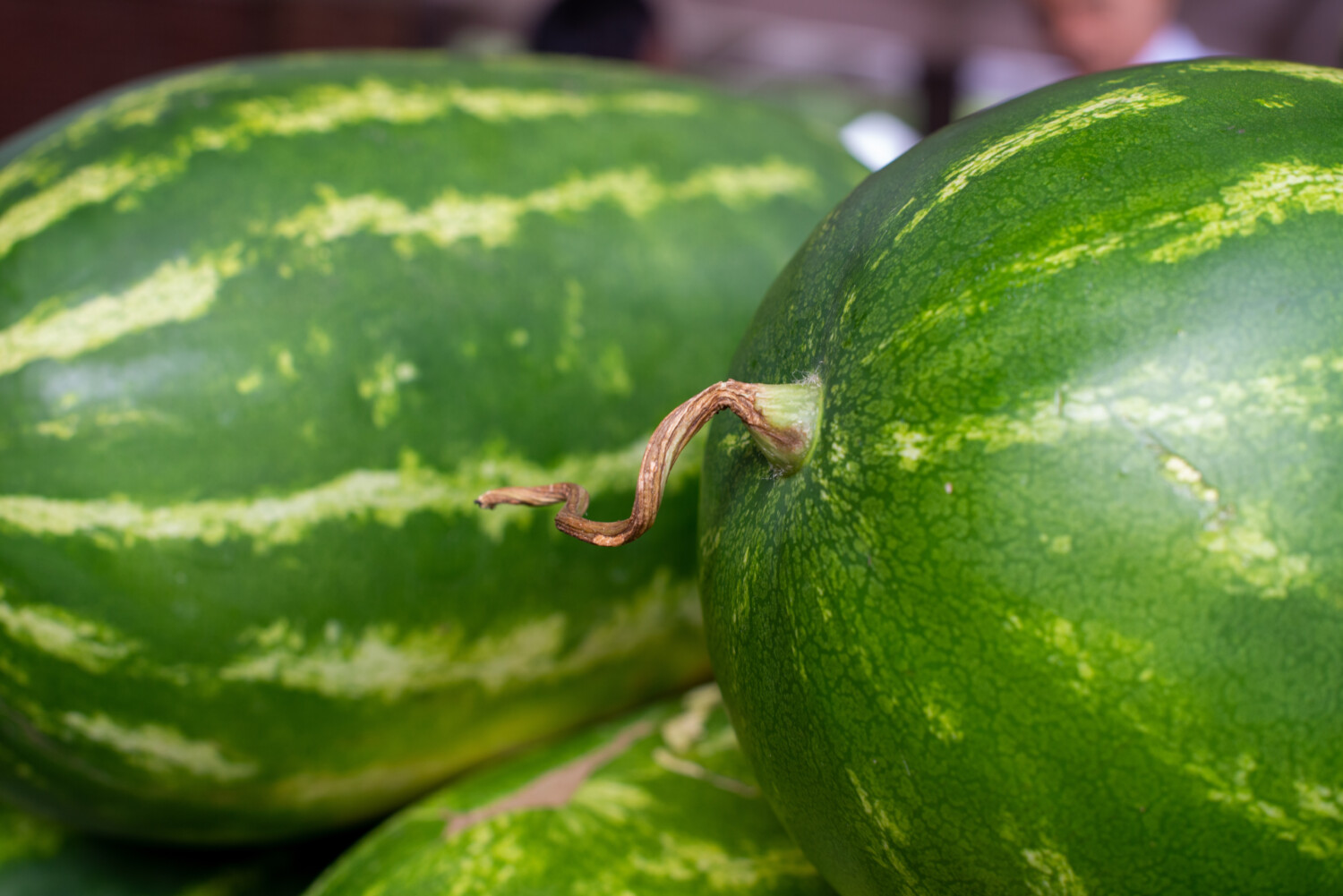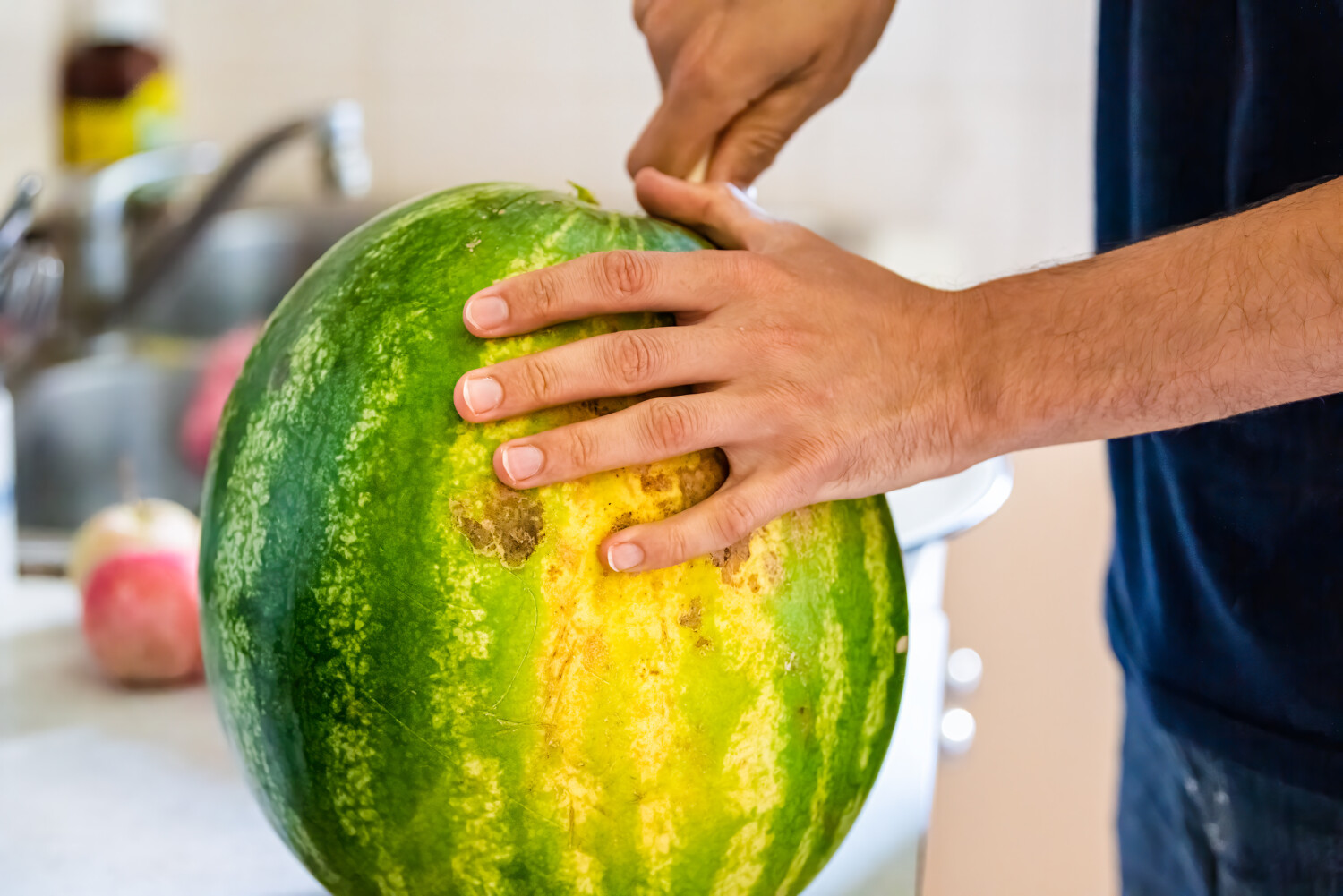Do you know the two-finger rule for finding ripe watermelon? This is an easy way to determine if you should buy the giant fruit you’re eyeing at the grocery store.
The two-finger rule is very simple. It says that you should be able to hold your index and pointer finger side-by-side on any of the green stripes of the watermelon. If the stripe is as wide as both fingers, your watermelon is ready to take home.
The tip has gone viral numerous times in various forms. Back in 2021, a post from Facebook user Kevin-Christie Kestler went viral when he shared advice from a farmer who said to make sure the green stripes are two fingers’ width apart.
The Kitchn confirmed this method by consulting grocery store managers, watermelon farmers and farmers’ market contacts and conducting her own at-home test.
Of course, there are other tried-and-true ways to pick a ripe, tasty watermelon that you can use, too.
To start with, look at how round and symmetrical the fruit is. A rounder (female) rather than more oblong watermelon is more likely to be juicier and sweeter. You also don’t want a watermelon with irregular bumps, cuts, bruises, or a non-symmetrical shape.
However, you do want a watermelon with a big yellow field spot, experts say. This patch of white-to-yellow color on the bottom of the watermelon where it sat in the field is a sign of how long the melon was left to ripen on the vine. If it’s larger and yellower, that’s good. A whiter and smaller patch means it was cut from the vine sooner.
Check the weight. If you pick up a watermelon that seems heavier than it looks, it has more water weight and will be juicier.
And look at the spider-like web marks on your watermelon. This shows where sugar is coming out of the fruit and can mean a sweeter watermelon.

MORE: Scientists grew watermelons in winter in Antarctica
You’re less likely to see a stem still attached to a watermelon but if there is one, it should be dried and brown to show the watermelon was left to ripen and fell off the vine on its own. Or look for the residual brown spot where the stem was. If that spot is green, skip that watermelon.
Don’t forget to check the color. Looking for a dark, dull watermelon rather than a bright, shiny one.
And finally, do the knock test. If you knock your knuckles on the watermelon and hear a deeper sound, it’s more likely to be at perfect ripeness. More of a hollow sound means the watermelon is likely overripe. Learning to discern the best sound of a watermelon requires more experience and is a little trickier, so some of these other methods, including the two-finger test, will be easier.

MORE: Here’s the fastest and easiest way to cut a watermelon
If you use all these methods together, though, you’re sure to find the best watermelon for your end-of-summer party!
This story originally appeared on Simplemost. Check out Simplemost for additional stories.


